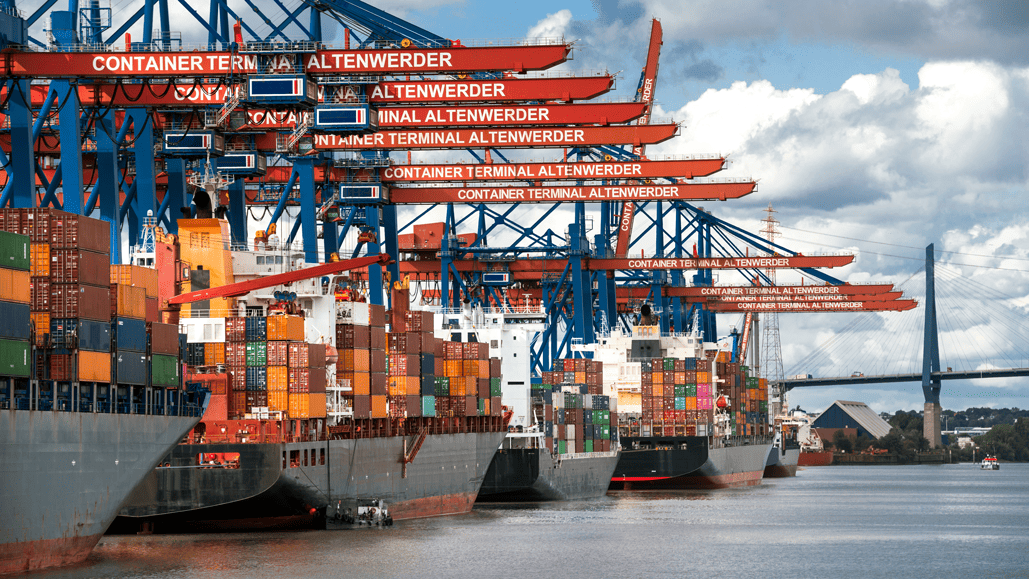Containers are essential building blocks for global trade. For smooth production processes in our customers' plants, we are from KTB Hamburg in use worldwide. In order to minimize procurement costs and transport MRO goods easily by ship, rail vehicle or road vehicle, standardized container types are used in logistics and freight forwarding industries. Containers made of corrugated sheet steel are easy and safe to stack and can thus be transported cost-effectively.
Advantages of ISO standards for containers in global transportation
- Standardized sizes for containers allow them to be used worldwide. deployed at ports and borders without having to reload the goods.
- Standardized containers can be safely stacked, which is indispensable for the safe and energy saving shipping and storage is.
- Standardized containers can be mounted on Ships, road and rail vehicles transported. If the means of transport is changed during longer transport routes, no reloading of the goods is necessary.
- Transport surfaces on ships, pallets for loading containers and forklifts are made according to the usual ISO standards for containers. Logistics companies and transport service providers can smoothly carry out deliveries only with standardized containers.
Standard dimensions for containers
Standard containers are also known internationally as General Purpose Container or Dry Vans designated. The most common ISO standard sizes for containers are 20 feet or 40 feet. For high-cube containers, the standard length is 45 feet. All sizes come in different styles for different purposes and cargoes. The usual Dry Van without additional designations means a closed 20 feet container with one-sided opening on one of the front sides.
| 20 feet container | 40 feet container | 45 feet high cube container | |
| Length, width, height | 20 x 8 x 8.6 feet(606 x 244 x 259 cm) | 40 x 8 x 8.6 feet(1219 x 244 x 259 cm) | 45 x 8 x 9.6 feet(1372 x 244 x 290 cm) |
| Interior | 590 x 235 x 239 cm | 1203 x 235 x 239 cm | 1356 x 235 x 270 cm |
| Volume | 33,1 m³ | 67,5 m³ | 86,1 m³ |
| Dead weight | 2,3 t | 4 t | 4,8 t |
| Maximum capacity | 21,7 t | 26,5 t | 25,7 t |
| Total weight (filled) | 24 t | 30,5 t | 30,5 t |
Special models for special loads
As import-export professionals in Hamburg, our KTB teams regularly organize international deliveries of spare parts, wear parts and hard-to-find maintenance parts to seamlessly support the workflow at our customers' production sites. For some types of delivery and transport, standard containers are not enough - fortunately, there are a variety of special models that are as straightforward as the Dry Vans can be loaded and can hold almost any delivery goods:
Examples of optional equipment
- Lugs for forklift truck
- Gripping edges for cranes
- Rail cutouts (gooseneck tunnels) for fastening
Other common container types at a glance
| Side Door Container | - Double doors are also located on one long side of the container- recommended for loading with forklift truck |
| Double Door Container | - Double doors are located on both ends- Recommended for truck transportation |
| High Cube Container | - Higher than standard containers- Equipped with additional securing lugs- The volume is larger, but the capacity in tons is slightly lower than standard models. |
| Bulk container | - Bulk container for loading by hose- Has filling rings on the top- Recommended for loading small parts in large quantities. |
| Open Top Container | - Also called soft-top box - Non-stackable- Recommended for loading oversized goods |
| Flat container | - Container without side walls with reinforced bottom- Recommended for bulky goods. |
| Plat container | - Container with reinforced bottom without side walls- Rail recesses for loading with forklift- Recommended for heavy machinery and other oversized goods. |
| Ventilated container | - Air exchange takes place inside ventilated containers- Ventilation takes place via watertight air slits or fans on the front sides- Also available as Coffee container known as they are suitable for the transport of certain foods |
| Integral container | - Container with built-in refrigeration unit- Necessary for the transport of fresh foodstuffs |
| Porthole container | - Better insulated alternative to the Integral refrigerated container |
| Tank container | - Tank containers can also be filled and unloaded by hose- The interior is equipped with a large canister for liquids- External walls are not necessary |
TEU and FEU - Common abbreviations for transport goods
In international trade, the abbreviations TEU and FEU are used more frequently to make it easier to estimate the volume of goods for loading. These abbreviations are also sometimes used as units of measurement for goods:
- TEU stands for "twenty foot equivalent unit" - goods with 1 TEU therefore fit into 20 foot standard containers
- The unit for the 40-foot dry van is FEU - 2 TEU equals 1 FEU in terms of quantity.
Your partner for MRO strategies for the procurement of individual parts
